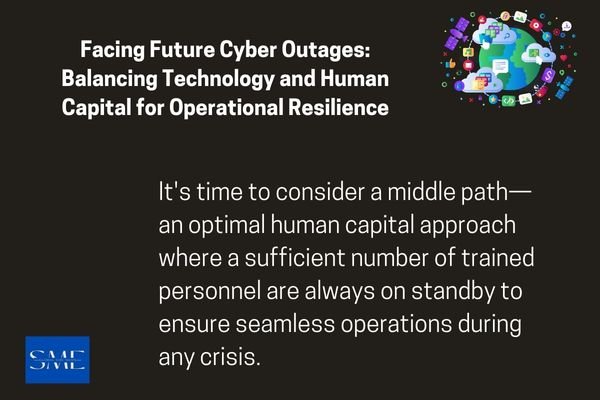There’s no hiding the fact that the global retail environment, much like the rest of the world, has been beset by negative or flat growth and shrinking margins. Some have laid the blame on increased competition from the internet.
Yet that explanation falls short – especially given that online retailing affects traditional retailers in differing ways, depending on the category.
- Rental renegotiation will come to the fore this year. Therefore 2020 will see a major change in the profile of retail tenancies at shopping centers and precincts.
- There’s no doubt that a major issue affecting local retail is tenancy terms, with many major retail companies, such as Solomon Lew’s Premier Investments, now publicly criticizing landlords who refuse to decrease lease costs.
- In many cases, retail stores are only unprofitable due to legacy rents that do not reflect current trading patterns.
- As a result, retailers are forced to make a difficult but logical decision: better to close a store and focus elsewhere than challenge landlords.
- Both Lew and Mark McInnes, Premier’s chief executive officer, have been candid regarding the future of its retail brands, which include Just Jeans, Smiggle, Peter Alexander, Jay Jays and Dotti.
- Late last year, McInnes stated that while Premier wouldn’t hesitate to close stores in cases where landlords refuse to give the company the same rent deals offered to competitors or international retailers. Many landlords have offered capital incentives and lower rent to attract international fashion companies, and retailers have been asking for exactly those same capital deals and rental deals. It’s not our objective to close stores, but if landlords don’t provide realistic rents will said one of the leading retail giants.
- Premier’s stance follows similar threats from department store giants Myer and David Jones, which are currently renegotiating leases to shrink store sizes and cut costs.
- While reducing costs and floor space could seem defeatist, it may prove to be a pragmatic strategy and negotiation tool.
As some industry commentators have put it, the only thing that will make landlords stand up and take notice is stores closing. According to a study -The rapid rate of failures and liquidations in Australian retailing is a consequence of fundamentally inappropriate and outdated business models that have their roots in the 1960s with the birth of consumerism. They have not been updated; therefore the cause is the wrong business model. Retailing has not changed with that dynamic and the current market.
2020 will be a year of significant structural change, evolution and growth: Cost structures are the problem. Rental renegotiation will come to the fore this year.
People like Solomon Lew have realized they are at a competitive disadvantage with the big groups that come in and say to landlords. We are not going to pay a percentage rent and we are not paying incremental rent rises based on the consumer price index. Therefore 2020 will see a major change in the profile of retail tenancies at shopping centers and precincts. With that said, there is no way to outrun or renegotiate the widespread change affecting the entire business world, beyond retail.
What does the future of retail look like asked a global enterprise studying consumer behavior and the retail industry. Deduction is that retail will promote wellbeing, strengthen community connection and social interaction – while increasing visitation, dwell time, engagement, consumer satisfaction and sales.
2020 has started amidst the closure of many retail stores including EB Games and Harris Scarfe. Meanwhile, online shopping has continued to grow seeing an average of 14.3% growth annually for the past 5 years.
Why would consumers shop at physical stores? Online retail is more convenient, has a wider range of products, and is often cheaper than their physical counterparts. Its recent insight paper stated.
- However, online retail cannot replace the ability of physical stores to provide experiences to customers. Physical retailers are not all rolling over in the face of e-commerce – many are incorporating unique and interesting experiences to draw consumers away from their homes and back into the store.
- 2019, we saw more and more consumers engage in mindful and sustainable consumer choices and retail behaviors. This will continue in 2020.
- Retailers will take a holistic approach to the challenges of e-commerce, using new methods to communicate with potential customers.
- The lines between channels, products, technology companies and social media entities are no longer clearly delineated. Retailers have been branching out for some time now, far beyond [the] familiar channels.
- Alongside these factors is a broad shift in consumer behavior toward environmentally aware purchasing – particularly among younger cohorts.
- 2019, we saw more and more consumers engage in mindful and sustainable consumer choices and retail behaviors. This will continue in 2020.
- Technological change has been one of the most disruptive forces of the past 10 years – and perhaps nowhere is this more apparent than in the retail sector.
- In particular, e-commerce, mobile shopping, and social media have changed consumer behavior and dramatically altered the margins of the trade.
- Also predictions that retail’s next frontier is smart devices and virtual assistants, like the Google Home or Amazon Echo Dot.
I’m a big believer in the increased autonomy of smart devices and virtual assistants and the impact that this will have on the relationship between brands and their customers, shares Steven.
In 2020, this trend of machines talking to machines – fridges telling virtual assistants to buy milk or printers notifying Amazon that they ran out of toner – and the according disintermediation of the active customer decisions will only increase.
So, what’s in store for retailers in 2020?
Below is a compilation of insights from a range of local and international retail experts on what they see as the most important elements retailers need to consider to not only to survive, but thrive in the coming years.
Focus on delivery
For decades, convenience has been a driving force of consumer decision-making. For retailers, that once meant providing a product or experience within a short driving distance of the customer’s work or home.
Today, consumers – particularly those in the Millennial and Gen Z demographic – show a strong preference for on-demand products and services. The phenomenon has been termed the ‘Amazon effect’ with the e-commerce juggernaut’s overnight Prime delivery now the benchmark of customer service for both online-only and omni-channel retailers.
In the US, the app-based courier service Postmates delivers products within an hour. In Australia, online fashion business The Iconic offers 30-minute delivery to metro addresses.
Consumers’ expectation of total convenience will require retailers to invest more heavily in expensive ‘last mile’ delivery – the movement of goods from a transportation hub to the final destination – in 2020.
This investment will likely include digital last-mile tracking services to improve logistical efficiency, as well as alternative delivery options such as on-demand courier-style models – which, despite having a higher marginal cost, can be useful for time-sensitive deliveries.
US retailers have been advised to use their physical stores as a ‘unified distribution centre’ in order to improve margins. Autonomous delivery services will also begin to penetrate the market this year.
Conscious consumerism continues
Retail experts believe one of the key trends of 2019 – sustainability and conscious consumerism – will continue to impact retailers this year, driven by the Gen Z cohort. Born between 1995 and 2009, these consumers will grow in demographic power and consumer spend. Conscious consumerism’ will gain in popularity, with consumers seeking to buy less.
Sustainable culture is poised to impact consumption at the expense of designers, manufacturers, merchants, and supply chains that underestimate or, God forbid, ignore it.
However, they will be willing to pay more in order to avoid unethical manufacturing processes, environmental degradation, and the exploitation of resources. Sustainability, now, is described as a “monolithic trend with the weight of youth behind it”.
While there are opportunities for retailers willing to focus on ‘green marketing’ – a strategy notably embraced by lab-grown diamond companies in 2019? Younger consumers are now willing to rent and share items they would once have bought due to environmental concerns.
Sustainable culture is poised to impact consumption at the expense of designers, manufacturers, merchants, and supply chains that underestimate or, God forbid, ignore it. One result is that brick-and-mortar retailers are going to find it more difficult than ever to persuade consumers to drive over and come on in.
Sustainability is also defined as an elephant in the room for businesses. Shifting to more sustainable practices is a move the industry needs and customers demand. Still, it’s fraught with years-long, protracted processes and stringent requirements.”
Consumers will increasingly expect businesses to accomplish a ‘positive sum game’, improving the environment and lifting living standards. Chief ethical officer roles will begin to emerge across different businesses and sectors in 2020.
The human touch
In order to entice consumers to continue shopping, businesses will make greater investments into staff training and service-based technology. A great retail experience starts with a frontline workforce that is knowledgeable, passionate, and knows how to get the shopper and store assistant relationship just right. Retailers that invest in data-powered equipment to empower their staff can expect a lift in customer experience. Mobile technology that allows online shoppers to interact with in-store staff via chat, photo and video would be the preferred medium.
John Hardy, a retailer uses a software platform to provide the type of personalized service its customers could previously only receive in-store. It will be fascinating to see how far and quickly it spreads and what comes next,” he adds.
Personalization was one of the most significant trends in retail over the past decade and technology will aid staff in delivering this element of the shopping experience. Retailers like Melissa Shoes are leading the way; the Miami-based brand is currently piloting an opt-in facial recognition kiosk to recognize shoppers when they enter the store and notify sales associates of their arrival.
Using the kiosk system, staff is able to view the customer’s previous purchases and preferences, enabling them to deliver personalized service. However very few retailers have achieved, the level of personalization that consumers have come to expect after years of using Spotify, Netflix, and YouTube.
However, several omni-channel retailers – including beauty and cosmetics chain Sephora – have created a more personalized customer experience by applying data from their loyalty program and e-commerce sales.
Studies predict, retailers will begin to use artificial intelligence and machine learning to personalize their products and services, though the sheer volume of customer data will overwhelm most businesses.
Increased interactivity
Interactive displays, events, and sensory experiences like food and live music have been utilized by retailers to make their store memorable and induce brand loyalty in consumers. Alongside personalized e-commerce, experiential retail will be “imperative” in 2020, demanding greater resources from store-owners. E-commerce retailers will continue to establish pop-up stores and events to add an experiential element to their offering.
Experience matters most these days, and the retailers who remain the most vulnerable will be those who refuse to change. Experience matters most these days, and the retailers who remain the most vulnerable will be those who refuse to change. Jewellery, high value industries are uniquely placed to take advantage of these trends.
Jewellery remains somewhat sheltered from the winds of technological change, unlike many other categories – think video and music stores – and jewelers still have the ability to offer a point of difference, often called a unique selling proposition (USP).
One point of difference for independent retailers is customer service and the need for shoppers to touch and feel jewellery.
But perhaps the greatest USP in the jeweller’s armory is design; few stores offer the customer an active role in designing and creating of their own unique product.
Branding gets personal
In order to compete with e-commerce giants like Amazon, branding will become increasingly important for independent retailers in 2020.
In this autonomous world and [with] the rise of the subscription model… branding will only gain in importance. That’s because the former will push every product and every service towards a commodity – and sharing a unique voice and vision will become of the essence to stay afloat. Adding the most successful brands will be the ones who present with a strong personality and point of view.
Marketers embraced the term ‘authenticity’ in 2019 – alongside diversity and inclusion. Companies will continue to emphasize those elements in their branding strategies in 2020.
Successful retailers need to embrace these tenets in their storytelling; it’s not just about marketing, it’s about reflecting that [‘authentic’] storytelling across the business. Adding, customers respond to businesses that reflect their own values and experiences, and reward them with loyalty.
Across the globe, retailers are facing the same challenges. However, with appropriate investment and innovation in the areas of delivery, staff, branding and sustainability, businesses can position themselves to withstand the pressures of the modern retail landscape.
2020 Predictions in a Nutshell
- Faster delivery
- Autonomous delivery; investment in the ‘last mile’; stores-as distribution centers
- Conscious consumerism
- Green marketing; rise of the rental economy; reduced consumption
- Face-to-face technology
- Data and tech services for personalized experience; apps and systems enable the ‘human touch’
- Experiential retail
- Emphasis on customer experience and sensory extras
- Essential branding
- Independents invest in storytelling, personality ‘authenticity’; monoliths remain price-focused.
Author Profile
-
KS Ahluwalia has over 30+ years of business experience across sales, operations, logistic and retail, publishing, consulting and management roles. Experienced in organization development consultant with primary expertise in leadership assessment, skills enhancement and performance management.
Has a unique ability to partner with senior leadership, adapt well to change, and collaborate with people throughout an organization allows to build productive relationships and solutions that have had a positive impact on the bottom line for numerous corporations.
Latest entries
 FEATURED21 July 2024ITU-Huawei Digital Talent Program Launches First Cohort to Drive Global Innovation
FEATURED21 July 2024ITU-Huawei Digital Talent Program Launches First Cohort to Drive Global Innovation FEATURED20 July 2024Huawei and Zambian Government Join Forces to Launch 100 Smart Villages
FEATURED20 July 2024Huawei and Zambian Government Join Forces to Launch 100 Smart VillagesAI18 July 2024Emerging Job Roles in AI
 FEATURED17 July 2024Robotics and Automation Engineering: The Future of Work and Industry
FEATURED17 July 2024Robotics and Automation Engineering: The Future of Work and Industry











